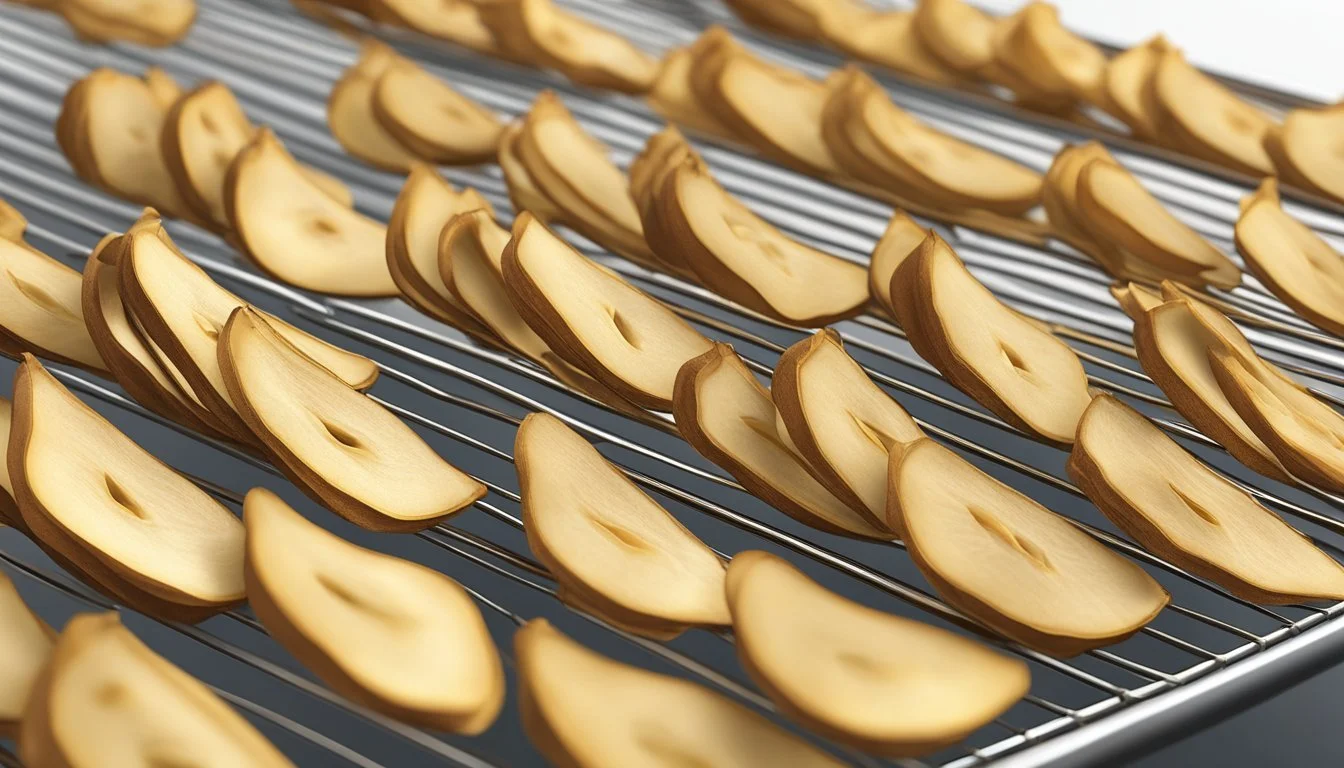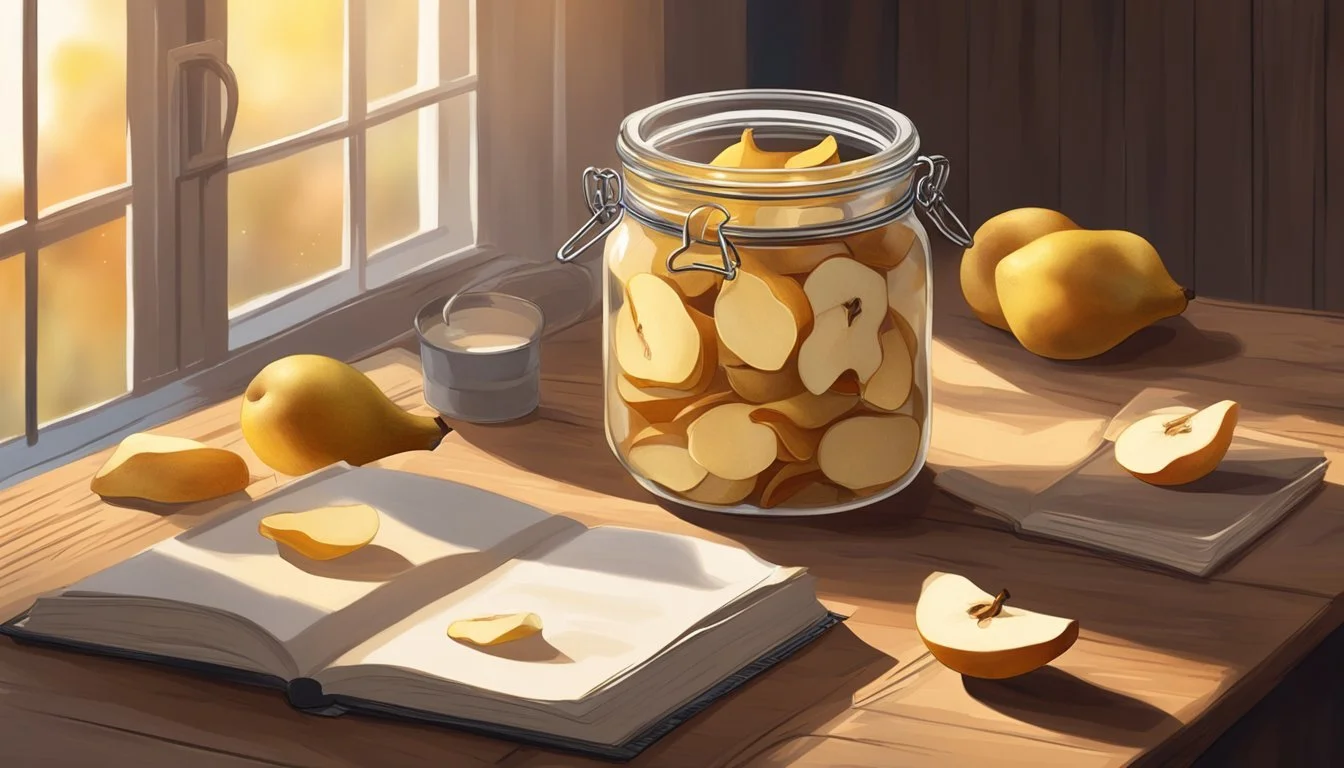How Long Do Dried Pear Slices Last?
Shelf Life and Storage Tips
Dried pear slices offer a convenient and long-lasting option for enjoying the sweet taste of pears year-round. By removing the moisture from the fruit, drying pears inhibits the growth of microorganisms and enzymes that would otherwise lead to spoilage. This process results in a shelf-stable product that maintains much of the fruit's original flavor and nutritional value.
The longevity of dried pear slices is influenced by several factors, including the drying method, storage conditions, and the fruit's sugar content. Properly dried and stored, pear slices can retain their quality for months, making them an excellent snack for those seeking both health benefits and convenience. Stored in an airtight container in a cool, dry place, consumers can expect their dried pears to last, and understanding these variables is key to maximizing their shelf life.
Benefits of Drying Pears
Drying pears offers a myriad of advantages ranging from nutrition to versatility. They provide a portable, healthy snack option and enhance various culinary applications while ensuring the longevity of the fruit's availability.
Nutrition and Health Benefits
Dried pears retain most of the nutrition of fresh pears, including essential minerals and antioxidants. They are considered a nutritious snack that can contribute to a balanced diet. When pears are dehydrated properly, they can offer:
Minerals: Such as potassium, vital for heart health.
Vitamins: Including Vitamin C and Vitamin K, supporting immune and bone health.
Fiber: Helpful in maintaining digestive regularity.
Convenience and Uses
The convenience of dried pears as a snack is undeniable. They are non-perishable and easy to transport, making them ideal for travel or as a part of a trail mix. They also can be used in various culinary dishes, either as a healthy snack on their own or incorporated into granola, yogurt, pies, salads, and compotes.
Food Preservation Techniques
Food preservation extends the life of ripe and overripe pears, particularly when canning is not desirable. Utilizing a dehydrator, oven, or air fryer to dry pears enhances their shelf life. This food preservation technique maintains the goodness of the fruit far beyond its natural ripening cycle.
Taste and Texture Profiles
Dried pears provide a unique taste and texture experience. Depending on the drying method and duration, the texture can range from crispy and crunchy to dry and leathery. The natural sweetness of ripe pears intensifies through dehydration, offering a more concentrated pear flavor.
Pear Variety Selection
Different types of pears like Bartlett, Bosc, and Anjou offer distinctive flavors and textures when dried. For example, Bartlett pears tend to retain a balance of sweetness and tartness, while Bosc pears provide a firmer texture. Selection of organic pears can also impact the end product's quality, as can the condition of the pear, with overripe pears often resulting in a sweeter dried fruit.
Preparation for Drying
Drying pears effectively begins with proper preparation, which not only preserves their flavor and nutrition but also ensures the fruit's longevity post-drying. This preparation entails selecting the best fruit, ensuring proper hygiene and safety measures, and utilizing the right cutting techniques and equipment.
Selecting and Preparing Pears
When choosing pears for drying, one should opt for fresh and ripe specimens that are still firm to the touch. Organic pears are preferred to minimize the presence of pesticides. It's crucial to wash the pears thoroughly, which can be done by gently soaking and swishing them in water and then wiping them with a clean cloth.
Ensuring Quality and Safety
Proper cleanliness is key to prevent contamination and spoilage. Blanching the pears in boiling water for a short duration can stop enzyme actions which cause browning and deteriorate the fruit. To further prevent browning, pears can be treated with a solution of lemon juice, citric acid, (how long does citric acid last?) or a commercial product like Fruit Fresh prior to drying.
Cutting Techniques and Equipment
Uniformaly thin slices are essential for even drying. One can employ a mandolin slicer or paring knife for consistent thickness. A vegetable peeler can remove the skin efficiently, while a melon baller or an apple corer assists in removing the core. Equipment should be clean and sharp to prevent bruising of the fruit. Here's a quick reference for the cutting process:
Wash: Clean the pear thoroughly.
Peel: Omit or use a vegetable peeler based on preference.
Core: Remove the center using a melon baller or corer.
Slice: Produce consistent cuts using a mandolin, paring knife, or similar tool.
Treat: Coat slices in anti-browning solution if necessary.
By following these steps with care, one will have properly prepared pear slices ready for the drying process, which will contribute to high-quality dried fruit with an extended shelf-life.
Drying Process
The drying process is crucial for creating dehydrated pears that preserve taste and nutrition. The method chosen affects the shelf life, moisture content, and overall quality of the finished product.
Using a Dehydrator
Dehydrators are specifically designed for the task of removing moisture from fruits. When dehydrating pears, consistent air flow and even heat distribution are essential to ensure the fruit dries uniformly. Users should place pear slices on dehydrator trays, avoiding overlap to maximize air circulation.
Oven Drying Methods
An oven can be a suitable substitute if a dehydrator is not available. Users must arrange pears on a baking sheet with space between the slices for adequate air flow. Set the oven to the lowest possible temperature, ideally 200°F or less, to mimic the gentle drying action of a dehydrator.
Alternative Drying Equipment
In the absence of a dehydrator or oven, an air fryer can also be utilized to dehydrate pears. However, careful attention to temperature and timing is required, and users should consult their air fryer's manual for specific instructions regarding its dehydrate function.
Monitoring Moisture and Air Flow
Regularly checking the pears for moisture content is imperative. Excess moisture can lead to spoilage. Effective air flow, facilitated by proper spacing on the trays, is also critical to the dehydration process, as it removes moisture efficiently.
Spacing and Arrangement on Trays
Pear slices should be arranged in a single layer with enough space to allow air to circulate around each piece. This promotes faster and more consistent drying. Trays should not be overcrowded as this hinders air flow and can lead to unevenly dehydrated pears.
Time and Temperature Settings
For best results, dehydrators should be set to a temperature of 130°F to 140°F. The drying time can vary depending on slice thickness and moisture content, typically ranging from 4 to 8 hours. In an oven, times may vary and users should frequently check the slices to prevent scorching.
Storing Dried Pear Slices
Proper storage of dried pear slices maximizes their shelf life and freshness. Achieving the ideal conditions prevents spoilage and maintains the quality of the pears over time.
Ideal Storage Conditions
To ensure maximum shelf life, it is vital to store dried pear slices in a cool, dark place at room temperature. The ideal conditions also involve maintaining low humidity to prevent moisture from compromising the dryness of the pears.
Maximizing Shelf Life
Under optimal storage conditions, dried pear slices can last for 6-12 months. To extend their shelf life even further, one can store the pears in a freezer or use a vacuum sealer to remove air before storage, greatly reducing the risk of spoilage and extending freshness.
Packaging for Freshness
Dried pear slices should be stored in airtight containers, such as mason jars or glass jars, to protect them from moisture and air. A secure lid is essential to create an air-tight seal. For added protection, food storage bags with a vacuum seal serve as an alternative, especially if freezer storage is intended.
Mason jars – ideal for pantry storage.
Vacuum-sealed bags – best for extended storage in the freezer.
Recognizing Spoilage Signs
It is imperative to know the indicators of spoilage:
Moisture inside the packaging: can lead to mold and softening of the pear slices.
Off-odors: suggest that the fruit has started to spoil.
Condensation on the container: indicates that the storage conditions may have been too humid or that the pears were not sufficiently dried before storage.
By vigilantly observing these signs, one can ensure their dried pear slices are always fit for consumption.
Creative Uses and Recipes
Dried pear slices offer an array of culinary applications, from enhancing meals with their chewy texture to boosting flavor profiles in an assortment of recipes.
Incorporating into Meals and Desserts
Dried pears can elevate the sophistication of salads by adding a sweet contrast to savory greens. They can also be layered into yogurt parfaits with a sprinkle of granola, introducing a pleasant crunch and fruitiness. When it comes to desserts, they can be chopped and mixed into batter for pancakes or muffins, or used as a topping for pies and compotes.
Making Healthy Snacks and Mixes
As a healthy snack, dried pears stand out thanks to their dense nutritional value. They can be easily packed into school lunches or office snacks. Additionally, they can be combined with nuts and seeds to create a nutritious trail mix. People can enjoy them as is, or add them to homemade granola bars where their natural sweetness diminishes the need for added sugars.
Pairing with Spices and Flavors
The subtle sweetness of dried pears pairs exceptionally well with a variety of spices. For instance, a light dusting of cinnamon or nutmeg can enhance their flavor, making them a versatile ingredient for spicing up breakfast cereals or garnishing sweet dishes. When soaked or simmered with spices, they can also be used as a robust flavor additive to meats or stews.
Dried Pear Recipes
Pear and Cinnamon Oatmeal:
Mix dried pears into hot oatmeal.
Sprinkle with cinnamon for added warmth.
Combine mixed greens, dried pear slices, and toasted walnuts.
Dress with a balsamic vinaigrette.
Pancakes with Pear Compote:
Prepare pancakes as usual and top with a compote made from simmered dried pears.
Sweeten with a touch of sugar or honey if desired.







